
This information came from a Facebook live demonstration by Richard Grindey on 13th April 2021 for the Carlisle and District Rabbit Club on English Angora rabbits providing showing and grooming advice as well as welfare and breeding information. Richard throughout the video was also responding to live chat messages and has one of his White English Angora rabbits called John for demonstration purposes. This was really informative with lots of useful information on handling, grooming and showing English Angora rabbits.
Richard has had rabbits for the past 20 or more years and the Angora rabbit is the one breed for him that has stayed the distance throughout the whole time of him keeping rabbits. He says that there is something about the breed that has captivated him and that he enjoys keeping and showing them. He has the showing bug with them and continued that with a lot of success and many award winning English Angora rabbits.
He does sometimes question why though when you have to get up extremely early to get them ready for a show and things go wrong or you have them in full coat to around 7-8 months old and they chew their coat prior to getting their last stars at a championship ending their run of success. They are not an easy breed but he has had around 50 Best in Shows with his English Angora rabbits ultimately a lot in partnership with Whincup and Grindey and that included London and Bradford wins which were iconic wins for him which were an honour and privilege and will stay with Richard forever.
The English Angora Breed is not without its constraints and frustrations especially when it comes to showing them and this should not be under estimated as they have a very short showing life and so much work goes into them at this stage. One of the hardest shows Richard has tried to get English Angoras ready for is the Bradford show as there are many factors that make it more difficult including the weather as it is wet, mild, damp and a nightmare to try to get an Angora stunning for this show. He has kept most colours of angoras but White has been the one that he has stayed with.

The look of the Angora is the next part of his Facebook live video and Richards continues to talk about his interpretation of the breed standard and what he looks for when he is judging as well as what he aims for when breeding for show angoras. He uses John one of his White English Angora rabbits to demonstrate the breed standard with and if you follow Richard on Instagram or Facebook you will be familiar with him from a baby. In this video he is around 13-14 weeks. John is still a youngster being groomed only a few times and currently his only one in show coat.
There are differences in the Angora rabbit and the main one is around whether it is an English Angora and even then there are differences in these as they differ depending on the where they are from ie American English Angora look different to the UK English Angora and the European English Angora. This can be down to cross breeding and introducing other types of Angora into the breed to improve or add a characteristic. The other Angoras include French Angora, German Angoras, Mini Angora, Giant angoras in America and Satin Angoras. In the UK the only recognised standard is for the English Angora.
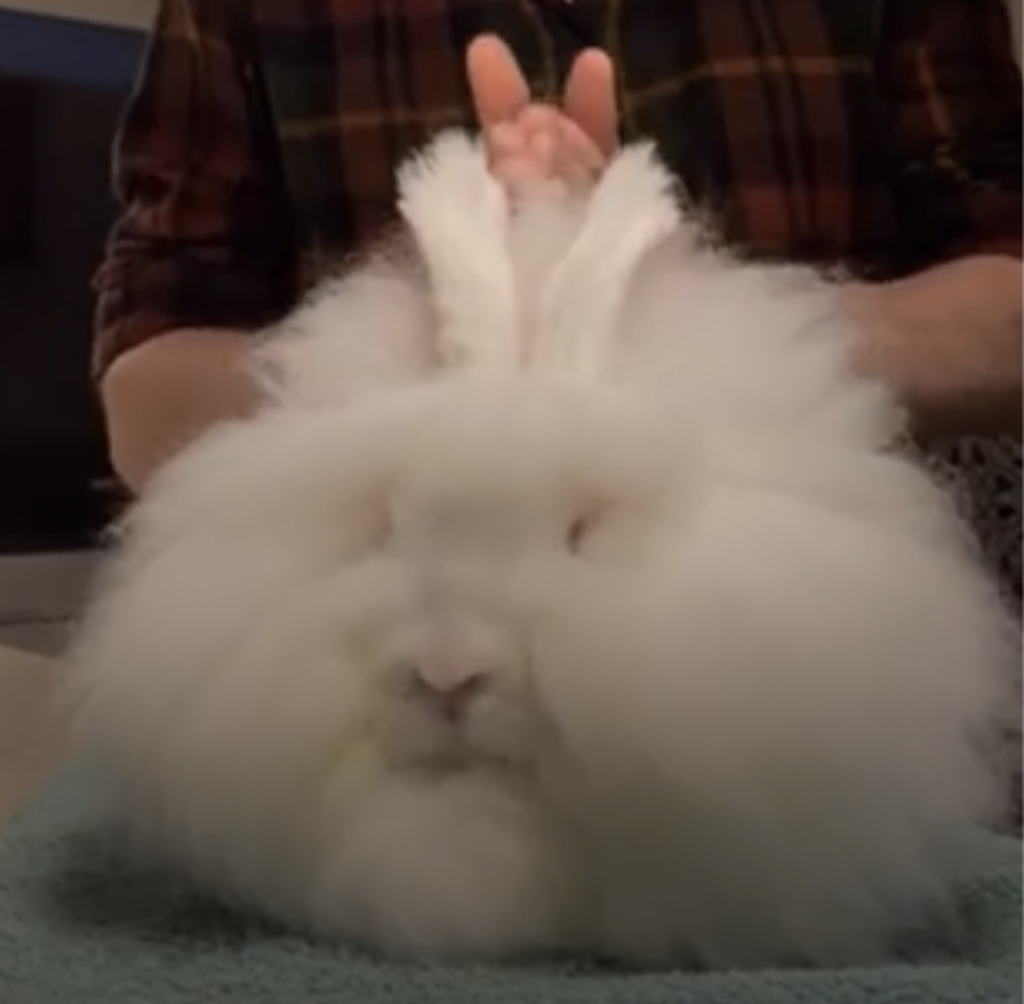
When looking at an English Angora on a table when judging or stewarding the finer points are in the breed standard and outlined by Richard in his live video. With the English Angora the main and most important thing is firstly the wool and it should be present in quantity and quality. This is worth up to 30 points and the texture needs to be as silky as possible. A test is to put your hands through the coat and it should feel like silk. The other element is wool quantity worth 25 points which also has a purpose for spinning and this is about maximum yield in density as opposed to length so you want a good dense coat.

Size and shape – rounds like a snowball. In a show situation this is hard to maintain, as towards the latter stages of the day the coat will loose some of the air and looks less rounded and it is not allowable to groom during the show only prior to the show. The shape also comes from the body and this should be short and cobby and it is worth feeling for the body type underneath the wool coat when judging as this is important. Adults should also be around the 7.5lbs mark in weight.



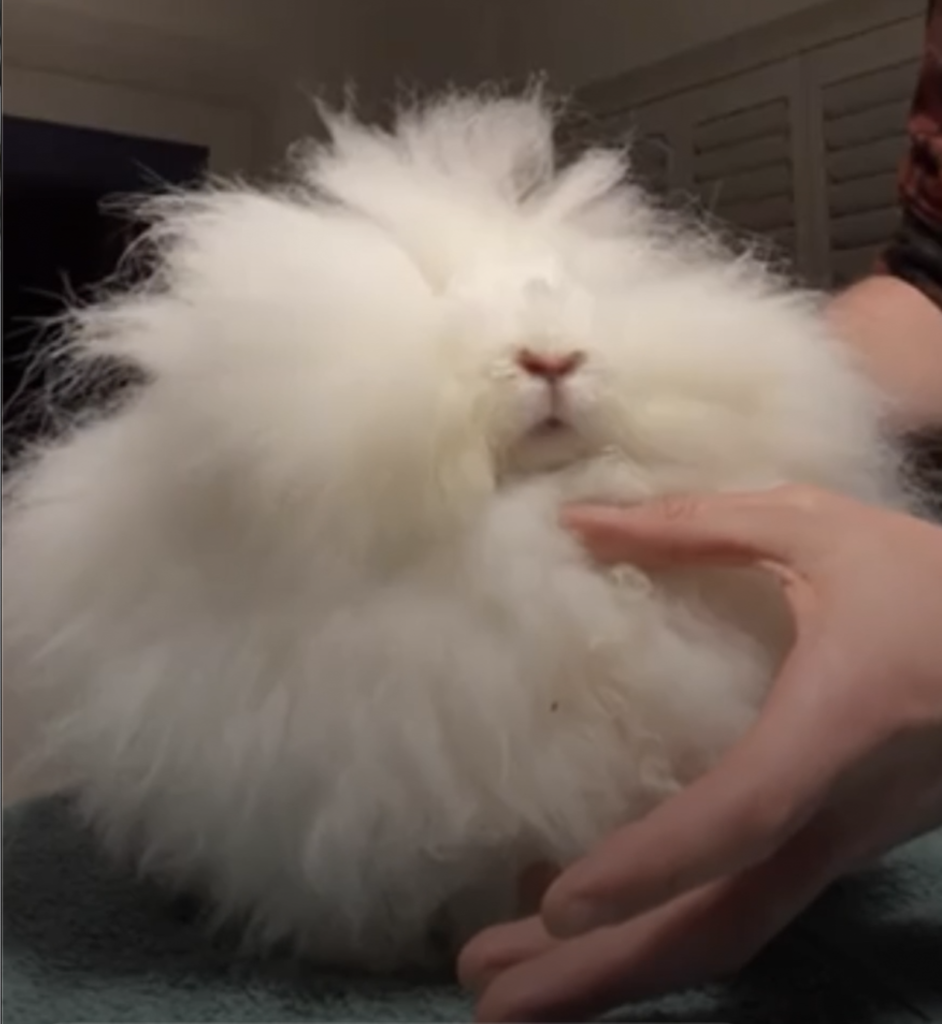
They should have a broad skull / width to muzzle but not a pointy face with decent cheek furnishings and this is worth 10 points. Ears short, well wooled and tufted. Thick front underneath the chin for the chest. The chest area is one place though that does tend to get messy when they eat but keeping on top of the maintenance is not too difficult and it is important they are fed a diverse range of food even if it does get stuck in the wool on their chest.
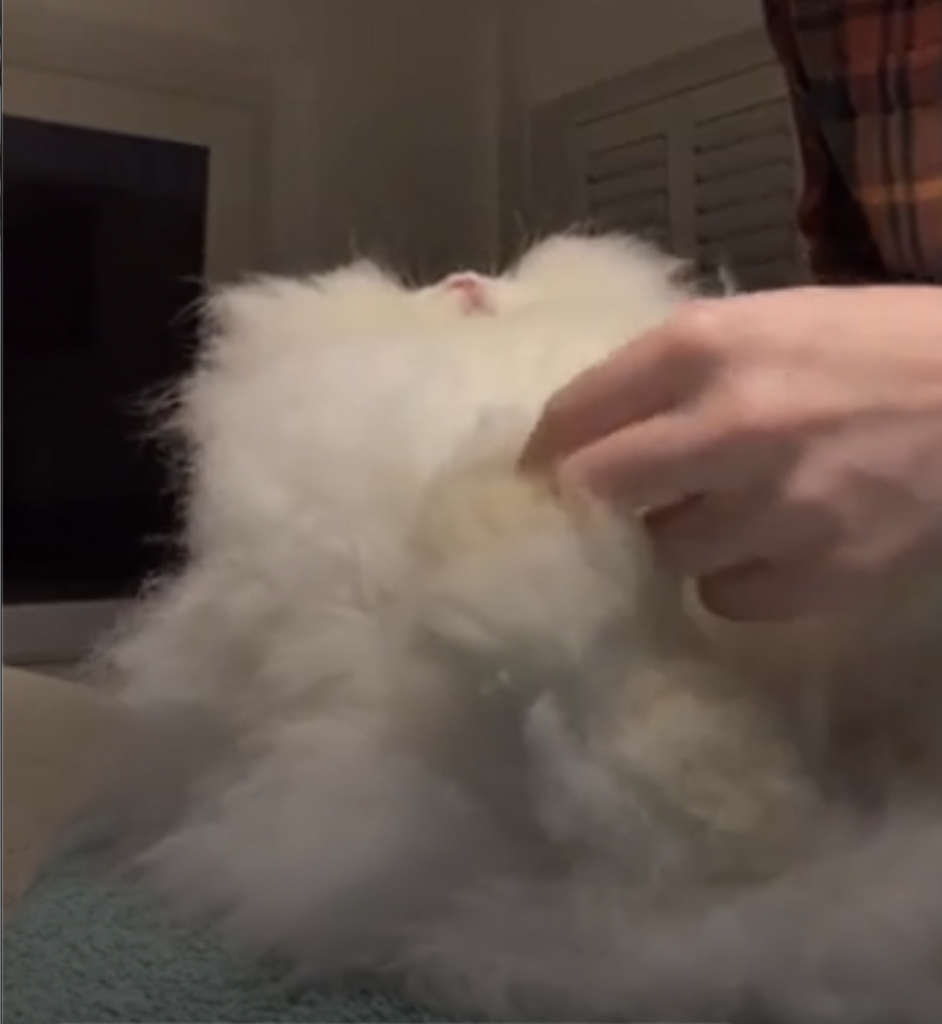
Well wooled legs and feet and points for this are 5 points under the breed standard. Decent front and back legs, well groomed, well presented and clean underneath are all things Richard looks for. Key thing to watch out for is creating ‘chicken legs’ through over grooming in between the back legs and on the thighs so something to avoid and groom in this area very carefully as it is a very sensitive area. The breed standard does vary with points for coloured Angora rabbits though.
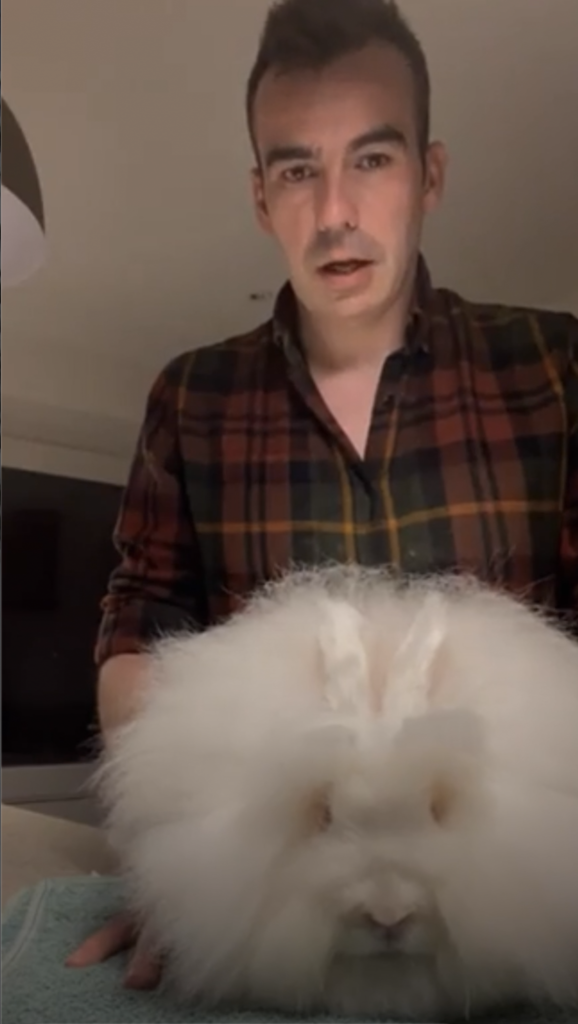
Stewarding English Angora rabbits
If English Angora rabbits are handled they pick up different smells and this can encourage them to chew their coats or lick them excessively. Also the tips that should be present on the end of the wool to form the coat frosting like look are easily damaged through excessive grooming and over handling. If anyone needs help at a show with stewarding just ask and Richard or one of the NAC members will help advise on this. Key thing is not to flatten the coat or push down on it, the coat should be upwards facing with the fringe in a downward position and rest your hands lightly either side of them on the show bench.
Grooming
Richard provides grooming demonstrations at shows as he feels this is very important when it comes to the English Angora to help everyone groom well. He feels it is an art and learning curve to learn what to use to groom and what parts to groom softly and harder ensuring the angora rabbits welfare at all times and it takes time. He said not to get despondent if it doesn’t go well the first few times as it took him a lot of practice and there is a lot of support from the National Angora Club and their members for help with this as Richard found out from starting as a Junior originally.
To start with Richard would blow the coat through with a hairdryer or inverted hoover to help separate the coat fibres and look for mats or knots initially on the top of the coat.

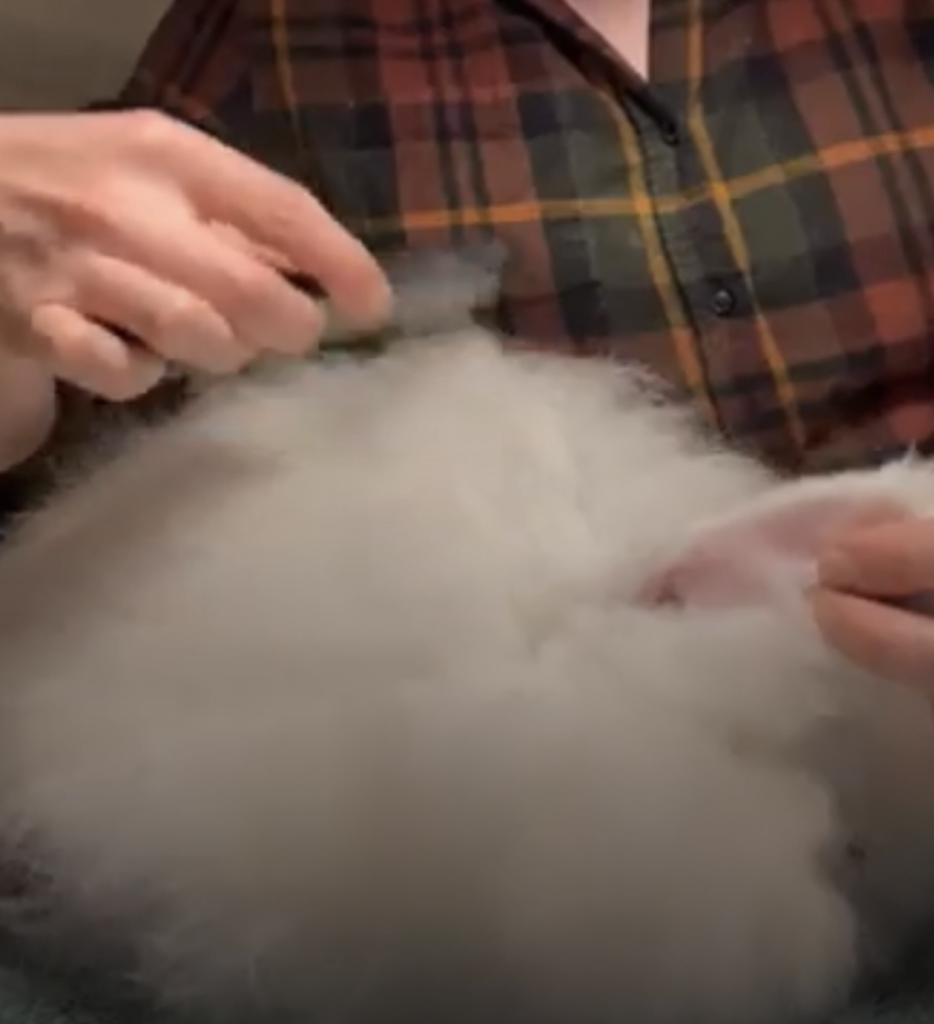
Richard uses a detangling comb with rotating teeth and lifts the coat up and work through but if it snags he removed the comb and uses his fore finger and thumb to tease the knot or mat. He uses this process all round the top coat. He then would move onto behind the neck using the same comb and the fringe.
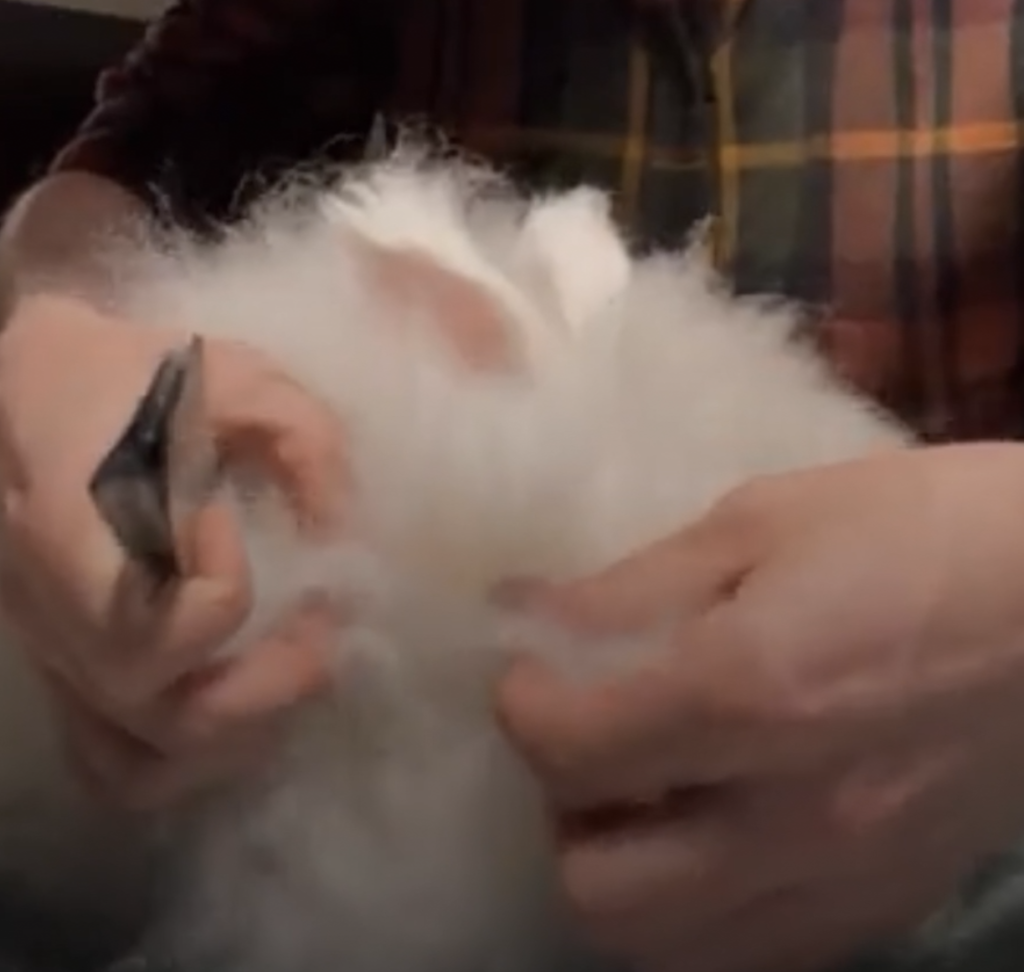
He would then turn the rabbit over and go to the underneath and he uses a mason Pearson nylon pocket brush, he has two of these same brushes but different ones for the top and underneath.
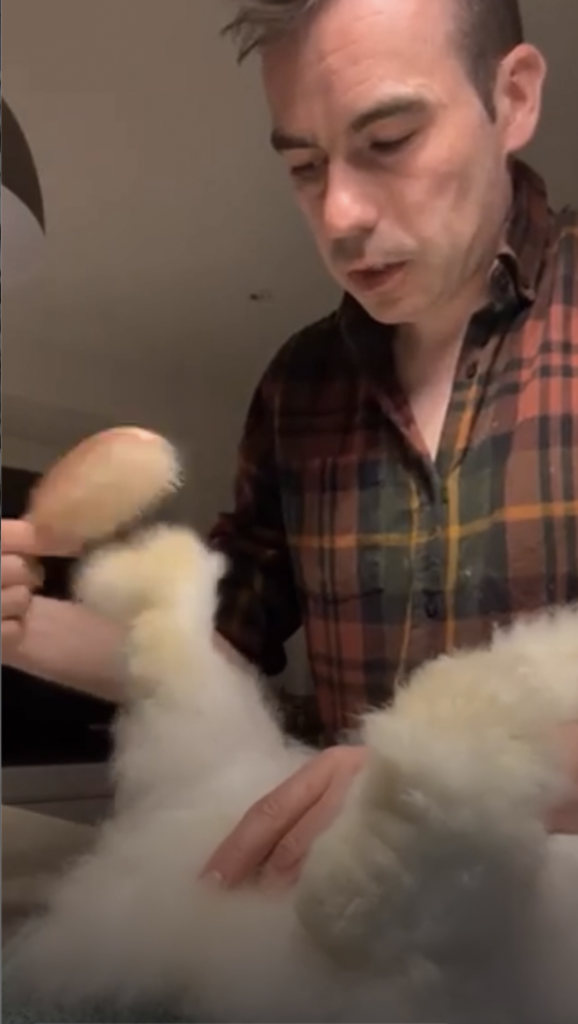
He lifts up the tail and back end and brushes through and the tail and he may use talcum powder or dry shampoo if they are wet or have stains on the underneath and then brush this area through as all the product should be removed especially if going onto a show table. It is just for cleaning and not to stay in the coat as this would alter the texture. He continues to use the brush in between the legs, the furnishings and on the heels but very gently as this is a sensitive area. He does the belly and front feet and chest area as well with the soft brush.
He uses a slicker or stiffer brush but only on the heel as the other parts of the coat are too sensitive and too soft for this type of brush.

Richard then turns John back up the right way and brushes out the sides with the nylon brush but he would normally only do the top coat on a show day.
Feeding
Richard feeds his Angora rabbits a product called Rabbit royal which has a molasses base and also his generally have wholemeal bread and kale, and those not in show coat get cabbage leaves, carrot and celery and rich tea biscuits.
Stud buck / brood doe class
Two main standards one for those in full coat and then another for Stud buck / Brood doe class as they have such a short full coat showing period from 4 months up to around 7-8 months as they start to malt out. The stud buck or brood doe is usually clipped leaving a 1 inch coat with ear, feet and fringe furnishings and they have a separate breed standard stud buck and brood doe to be judged against.
Richard ends his live session answering questions on a range of questions on clipping, wool rabbits, breeding, and welfare.

